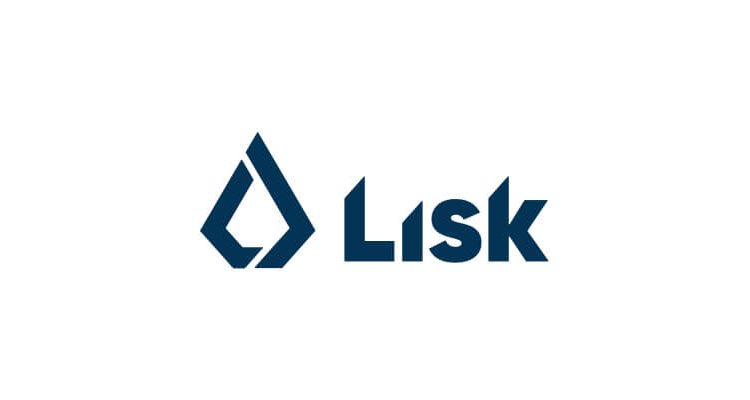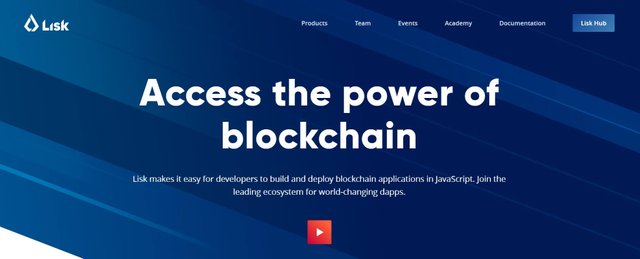What Is Lisk – Beginner’s Guide

Lisk is a cryptocurrency centered around uncomplicated blockchain development for the public. Lisk hopes to address the lack of developer adoption of blockchains that they saw to be a problem in early 2016, they want to do this by making blockchain development straightforward and undemanding. Lisk users can develop their own blockchains on what Lisk calls ‘sidechains’, and build on them in almost any way they choose, such as building Decentralised Applications (DApps), games, or a messaging system. These sidechains accommodate all of the data you need for your app and Lisk advertises them as being easy to build and easily customized. For you to progress in Lisk in any way you must spend their cryptocurrency, the Lisk Coin (LSK), which is interwoven into the Lisk ecosystem. For access to such things as building on the platform, transactions or voting, LSK is required.
Lisk is comparable to Ethereum in the sense that it is a blockchain project, however Ethereum focuses on smart contracts where Lisk wants to focus on creating individual blockchain applications.
The Basics of Lisk
Lisk is a framework on which developers can build and distribute their own applications on top of custom sidechains, these sidechains are basically personal blockchains for developers which are used to create DApps and tokens, it’s personal to the developer, so it’s free of any spam or interference from any other sidechains or the Lisk ‘mainchain’, the Lisk hub that hosts LSK. This entire project is built on javascript and is entirely open source and free.

Building your application
Applications are the final product of any developer’s Lisk endeavour and are just like any other fully developed interfaceable applications. These applications however are built on top of their own blockchain which means they are totally decentralized rather than being owned by a single entity. Lisk recognises that most people don’t have the tools or skills to build an application from scratch, so provides users with their Sidechain Development Kit (SDK), which means users can make an application with a blockchain, a front-end (user interface) and a back-end (application logic), which are all able to be developed and customized by the user.
Ultimately Lisk is a blockchain application platform so Lisk is aiming to make creating applications as easy and accessible as possible for the user. However Lisk wants its users to be connected to the entire ecosystem and not just create standalone applications, this is a choice the developers can make by spending LSK tokens, through doing this they gain access to an array of benefits such as leveraging blockchain applications, starting with an existing user base and attracting sidechain delegates.
How is this different to other blockchain projects?
Lisk is passionate about the fact that there is space for multiple blockchain projects in today’s society, and they have advertised the ability to leverage third party services into your Lisk blockchain project. Yet ultimately many people are asking the same question, how is Lisk different?
Fundamentally, the sidechains are just decentralized databases for the blockchain applications, however they are advantageous when you compare it to the way another blockchain project, say Ethereum, tackles this same issue of application creation. Where Ethereum allows users to code their own DApps on top of smart contracts using their programming language Solidity, users are tied down to the niche programming language and the lack of range in what you can do. Lisk gives developers total freedom to create not just DApps but entire blockchains, while still giving them the ease and efficiency of not having to develop a blockchain from scratch.
Furthermore the Lisk sidechain uses Javascript which means a lower entry level as Javascript is already an established coding language, not only is it established but is very widespread, with huge companies such as Google and Microsoft implementing it into all of their devices.
Another way in which Lisk differs from Ethereum is that Ethereum smart contracts are strictly back-end services, and the user will have to rely on the combination of smart contracts to give them their desired application. As well as the lack of choice in their front-end design due to that coming from a third party.
Delegated Proof of Stake
Delegated Proof of Stake (DPoS) is the consensus mechanism developed by Bitshares that Lisk operates on, DPoS produces/confirms blocks in the blockchain.
In short, DPoS requires coin holders to vote on ‘delegates’ who are responsible for maintaining the blockchain by validating transactions, this means there is no mining and there is no proof of work generating new coins. In the Lisk ecosystem there are 101 delegates who are chosen by Lisk token holders, these token holders are continuously voting on hundreds of potential delegates to crown the top 101.
Two issues that Lisk identified was the incentive for delegates to come and secure the blockchain, as well as the need to compete for a top 101 spot, as delegates striving to be the best is a reliable way to have the fastest and most secure blockchain validations. This is how Lisk came up with forging rewards, which is simply a reward of LSK to the delegates who gain the most votes to make it to the top 101 spots. This incentive will push delegates to sign blocks with the most efficiency and reliability so that they can gain the trust of the voters on the network, therefore receiving the LSK when they make it to the top 101. This also provides the network with a degree of financial independence due to the currency being distributed to the public, which can then be reinvested into the network to grow it further.
ARK coin also uses Delegated Proof of Stake.
Team
Currently the Lisk team is made up of 41 members. 22 of those are developers, 9 are marketers, 6 creatives and 4 in operations. Some notable members include:

Max Kordek – One of the founders and the current president of Lisk, Max has been in the blockchain space since 2012. He founded Lisk with the aim to bring blockchain development to the masses.

Oliver Beddows – The other co-founder and current Vice President and CTO, Oliver has been a full stack developer working for various enterprise applications with 12 years experience. He’s a blockchain and open-source enthusiast and aims to help people build blockchain applications simply and easily.
The Lisk team is mainly based in Berlin but have members and contractors all over the world.
Roadmap
History
Lisk started out as a fork of Crypti that had an ICO in 2016 that raises 14,000 Bitcoin, which at the time was worth roughly $6 million. It was also the second most successful ICO when in launched. On 24th of May the mainnet for Lisk went live and the cryptocurrency was available to trade on exchanges.
Lisk announced a partnership with Microsoft in 2016 to provide a blockchain as a service feature through the Azure platform.
In February 2018 Lisk launched a rebrand that had been long in the making and had been hyped up to be a complete relaunch. This relaunch was announced with a press conference that many considered a failure. The price of Lisk tumbled after it had risen the weeks and months before the event. This is somewhat expect and also happened to Raiblocks when they rebranded to Nano.
Future
Despite a bumpy start to 2018 Lisk has major plans. Lisk aims to add two major components to the Lisk ecosystem. These are Lisk JS and Lisky. Lisk JS will introduce additional modularisation and encryption features, whereas Lisky will add a Command Line Interface (CLI) wrapper which will use command lines to assist developers with automation and scripting.
Trading Information
Since it’s ICO, Lisk coin price stayed fairly constantly low until around mid 2017 where it first started to see some price growth. Since then the price of Lisk has risen quite a lot and reached an all time high of over $38 per Lisk coin. For more information and statistics go to our post on Cryptos Decoded
How to Buy Lisk Coin (LSK)
There are many exchanges that offer Lisk. Most of these are crypto to crypto exchanges such as Binance. We’d recommend Binance and you can read why in our full Binance review and beginners guide.
To use Binance we’d recommend picking up some Bitcoin or Ethereum from Coinbase or Coinmama so you can trade on Binance. Read our reviews for Coinbase and Coinmama below.
Read More:
How to Store Lisk Coin (LSK)
The easiest way to store Lisk Coins is in the Lisk wallet that was launched with the rebrand. This is a web based wallet that uses a very simple but effective sign in system and is incredibly easy to use. It’s fast and works like a charm.
Competition
There are a lot of competitors to Lisk that do very similar things. However, many of them specialise in certain parts. For example, Ark are looking at unifying blockchains and Ethereum have already proved the success of smart contracts and DApps. Whilst there are definitely big differences between these and Lisk, there still provide notable competition.
Other competition includes:
Despite the large amount of potential competition, there is also a lot of space for many companies to all exist at once.
Our Opinion on Lisk
We think that Lisk has great potential to be a good long term investment as it has been a slow and steady riser. It’s updated regularly and it’s good to see consistent improvements. Their rebranding might not have been what people wanted to see but there has been a lot of great additions that really make Lisk stand out.
Pros and Cons
Pros
- Building their SDK on Javascript, the most popular coding language, means that it will be super accessible and theoretically open to the most amount of developers.
- Large and active development and marketing team with a rather active community.
- Great user experience with the aim of making development as easy as possible is sure to help with adoption of the platform.
Cons
- The fees and voting costs are rather high in comparison to other cryptocurrencies like Ark. And Ark are even planning to reduce this in the future.
- No cold storage support. Their main wallet is based online which isn’t ideal if you’re looking to hold Lisk for the long term.
Conclusion
Overall, Lisk is a relatively unique project that has a lot going for it. Despite the potentially tough competition we think the use of Javascript is a great feature that could well prove to be a major factor in bringing in new developers.
With the consistent updates and improvements, solid team and easy of use, the continual growth of Lisk is looking like an inevitability.
For more information and Lisk news, follow our Twitter and like our Facebook page.